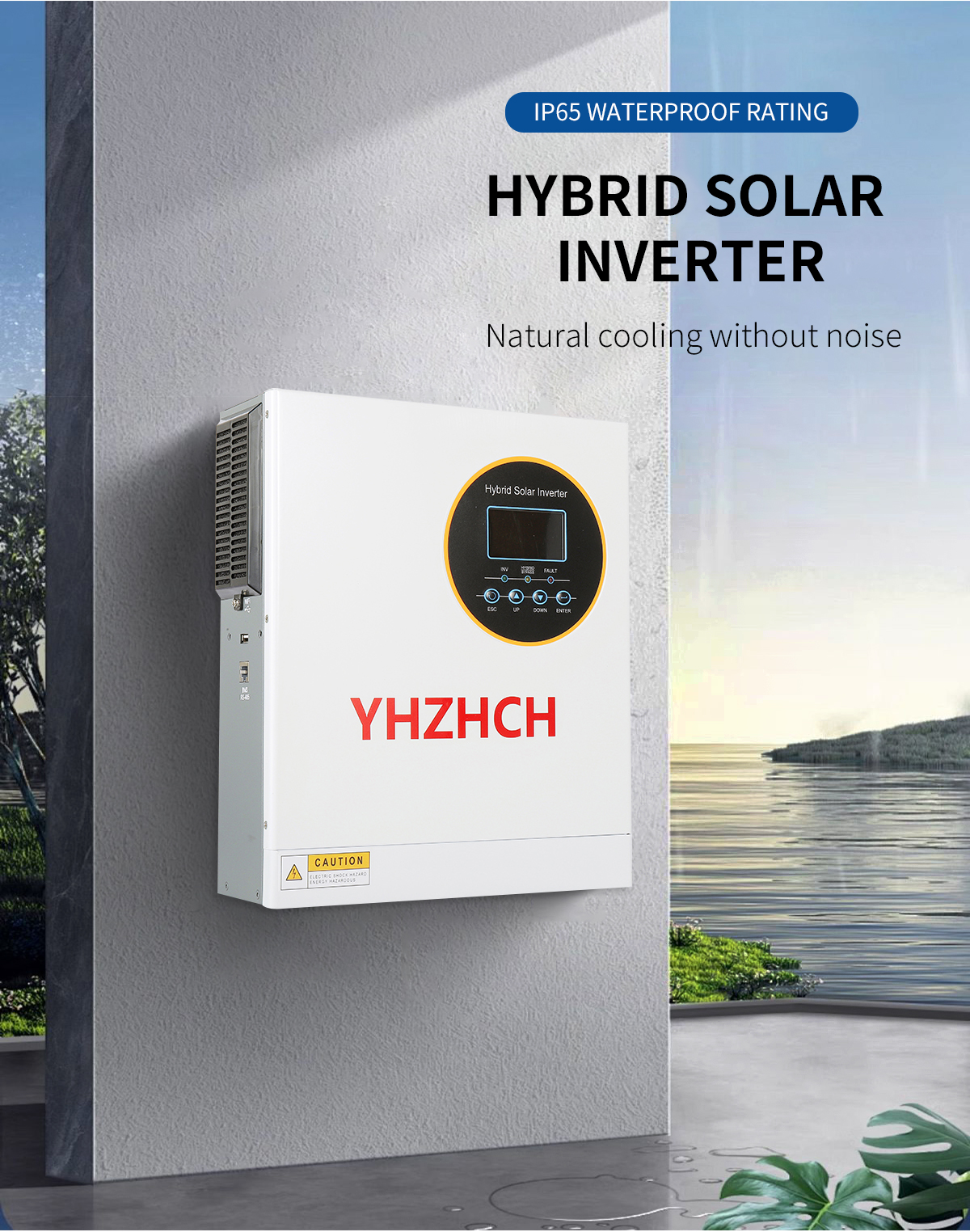To determine whether the heat dissipation performance of an inverter is good, a comprehensive evaluation should be conducted from multiple aspects such as design principles, hardware configuration, actual test data, and long-term performance. The following are specific judgment methods and key indicators:
1、 Observation of Hardware Design and Heat Dissipation Configuration
1. Material and area of heat sink
texture of material:
High quality heat sinks are often made of aluminum profiles or copper aluminum composite materials. The thermal conductivity of aluminum is about 237W/m · K, while that of copper is 401W/m · K. The combination of copper and aluminum has a higher heat dissipation efficiency (such as base copper+fin aluminum).
Judgment method: After disassembly, observe the material of the heat sink (aluminum/copper for magnet non suction). At the same power, the thicker the heat sink and the higher the fin density, the stronger the heat dissipation ability.
Area and Structure:
The heat sink should cover the core heating element (such as IGBT module, MOS tube, transformer), and the fins should be arranged longitudinally in a comb shape (conducive to air convection), or paired with heat pipes (phase change heat transfer, efficiency improvement of 3-5 times).

2. Fan configuration and cooling scheme
Heat dissipation path:
Observe whether the air inlet and outlet form independent air ducts (such as bottom air inlet → heat sink → fan → top air outlet) to avoid hot air backflow.
Outdoor inverters may use passive heat dissipation (fanless), relying on an all aluminum casing and large area heat dissipation fins. It is necessary to confirm whether the casing temperature is within a safe range.
3. Thermal interface materials
Silicone grease/silicone pad:
High thermal conductivity silicone grease (thermal conductivity ≥ 2W/m · K) should be applied between the chip and the heat sink, or silicone grease pads should be installed. Poor quality silicone grease is prone to drying up and cracking, leading to heat dissipation failure.
Judgment method: After disassembly, observe whether the silicone grease is evenly applied, whether there is any dry solidification or bubble phenomenon.
2、 Actual operating temperature test
1. Full load temperature rise test
Test conditions:
IGBT module surface: ≤ 80 ℃ (exceeding 90 ℃ may trigger overheating protection).
Top of heat sink: ≤ 65 ℃ (feels hot but can be briefly touched).
Shell surface: ≤ 55 ℃ (to avoid burns from user contact).
The ambient temperature is 25 ℃ (standard operating condition), the inverter is loaded with 100% rated power, and it runs continuously for 30 minutes.
Use an infrared thermometer or thermocouple to measure the temperature of key parts:
Comparison standard: In inverters of the same power, the slower the temperature rise and the lower the stable temperature, the better the heat dissipation performance.
2. Adaptability to high temperature environments
Extreme testing:
Run at 70% power for 2 hours in a 40 ℃ constant temperature chamber (simulating high temperature scenarios in summer), and observe whether there is a power reduction or shutdown protection.
High quality inverters should be able to operate stably in an environment of * * -10 ℃~50 ℃ * * for a long time (referring to the operating temperature range indicated in the product specification).
3. Fan start stop logic and noise
Temperature control strategy:
When the temperature is low (such as<40 ℃), the fan should stop rotating, and when the temperature is high (such as>60 ℃), the fan should run at full speed. It is possible to simulate temperature rise by covering the heat sink and observe whether the delay in starting the fan is reasonable (too short a delay can easily cause the fan to start and stop frequently, affecting its lifespan).
3、 Long term reliability and failure risk
1. Aging speed of components
Electrolytic capacitor:
High temperature is the biggest killer of capacitor lifespan (for every 10 ℃ increase in temperature, the lifespan is halved). High quality inverters should use capacitors that can withstand 105 ℃ (such as Nichicon and Ruby brands), and the surface temperature of the capacitor should be ≤ 70 ℃ during operation.
Judgment method: After 2 years of use, disassemble and observe whether the capacitor bulges or leaks. Poor quality products may age within 1 year.
Solder joints and circuit boards:
High temperature can cause oxidation of solder joints and carbonization of circuit boards. Check for blackening or cracks in the solder joints of power devices. High quality products will be coated with a three proof paint (moisture-proof, dust-proof, and salt spray resistant) for protection.
2. Overload and heat dissipation linkage test
Short term overload scenario:
Load 120% of rated power (such as a 1000W inverter with a 1200W load) for 5 minutes, and observe whether the cooling system can support the inverter without triggering protection.
If the temperature rises sharply to the protection threshold, it indicates insufficient redundancy in the heat dissipation design.
Summary: 4 key points for quickly judging heat dissipation performance
Touch temperature: After running at full load for 30 minutes, the shell temperature is ≤ 55 ℃, the heat sink temperature is ≤ 65 ℃, and there is no unbearable burning sensation.
Listening to noise: The start stop logic of the fan is reasonable, and the noise is low and there is no abnormal vibration when running at full speed.
Design: The heat sink is thick and the fins are dense. The fan uses ball bearings and has independent air ducts and dust-proof design.
Check configuration: Use high thermal conductivity silicone grease, heat-resistant capacitors, and ensure that there are no signs of aging at the solder joints of power devices.
By using the above methods, the heat dissipation performance of the inverter can be effectively evaluated, avoiding the risk of shortened lifespan, frequent failures, and even fire caused by poor heat dissipation.


